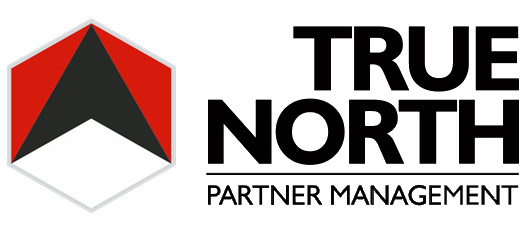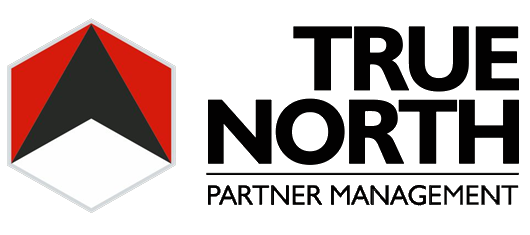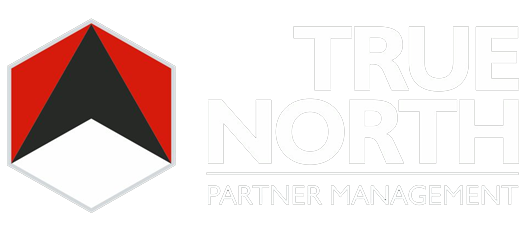The following post originally appeared on Forbes | August 4, 2014
Unless you are a high-profile bankruptcy attorney, you probably haven’t heard of Al Togut. A man known more for his actions than his words, he founded a bankruptcy boutique in 1980—Togut, Segal & Segal LLP—and has since established himself as one of the bankruptcy world’s Magnus Apollos. In fact, even if you don’t know his name, unless you’ve been living under a rock, you’ve certainly heard of some of the bankruptcies he’s worked on, which include behemoths like General Motors, Chrysler Automotive, Delphi, Enron, Loews Cineplex, Charter Communications, Frontier Airlines, and Daewoo International (America) Corp., which, together with its Korean parent, underwent the largest non-sovereign debt restructuring in history with aggregate liabilities exceeding $70 billion.
This is only a sample of the hundreds of bankruptcies he’s work on. And though his corporate client list is a veritable who’s-who, most relevant to today’s piece is his list of law firm clients, which includes some of the highest profile law firm bankruptcies to date, including: Finley Kumble, Shea & Gould, Bower & Gardner, Berger Steingut, and most notorious, Dewey & LeBoeuf. While some of his work has not been made public, it is accurate to say that he has more law firm bankruptcies under his belt than any other attorney on the market.
Recently, he’s turned his law firm undertaking experience toward something more resuscitational: He, along with his cohort Joff Mitchell of Zolfo Cooper were called in by Patton Boggs to help them firm-up their pre-merger financial picture. When a doctor spends enough time with patients, he learns a thing or two about what makes their patients healthy. Togut is no exception…. His experience with failing firms is rare and invaluable, and his advice is something to be heeded. In a market where consolidation is increasingly the go-to strategy for growth, and in some instances, survival, I thought a conversation with Togut—and Mitchell in an upcoming piece—would be valuable. See what Al “The Law Firm Whisperer” Togut had to say in our exchange below:
On His Entrance Into Law Firm Bankruptcy
Parnell: Your institutional bankruptcy practice has a star-studded history. What brought you to law firms in particular?
The case was bumping along for a year because nobody had any clue whether there could be a chapter 11 plan or whether it would be a straight liquidation under Chapter 7. The Trustee and banks decided that partners should be individually pursued for the partnership’s asset deficiency, and for that to happen, a Chapter 11 plan would be required so that there could be an injunction in the plan preventing creditors from suing partners who contributed; that can only be done in Chapter 11. Under the Bankruptcy Code, automatically, a creditors’ committee must be appointed in a Chapter 11 case. And when the committee was appointed, the committee members who had seen my work said, “We want you to be our counsel.” It was a high-profile case and I agreed. And with that, I became the first committee counsel in a law firm bankruptcy case—I was on the map.
After that, I represented the creditors committee in Shea & Gould, Bower & Gardner, and Berger Steingut. There were others too. I did a bunch of them, and I was often in the news and my practice really started to take off. Finley Kumble, in particular, was widely covered by the press and we succeeded in confirming a Chapter 11 plan that people thought couldn’t be done. It was totally precedent-setting, but it was also a messy case because it was the first of its kind and we were trying to adapt corporate bankruptcy provisions to a professional partnership case, but we got it done.
Parnell: Talk to me about the expansion of your practice. I looks like you’ve branched into a number of different industries.
Togut: I have been very fortunate. I represented Rockefeller Center and Olympia & York’s World Financial Center in their successful Chapter 11 restructurings; Daewoo too. I also went on to be co-counsel for Enron, General Motors, Chrysler and a whole host of high-profile cases. In Chrysler, my firm was co-counsel with Jones Day. Chrysler was under enormous financial distress and in jeopardy of liquidation, and it was racing against time before it would cease to exist. We filed that case in free-fall; we didn’t have a deal with major creditors, and we were able to do all the litigation— we even went up to the Supreme Court on a request for a stay which was issued for a while, and then dissolved—and made it to the closing with Fiat in only 42 days from the beginning of the case! That’s how fast it moved.
On The Difficulties Of Law Firm Bankruptcies
Parnell: Are these marquee cases more difficult than law firm cases?
Togut: We had Chrysler hearings that would start at 7:30 in the morning and go to 11:00 at night with no dinner break. And people would say to me in that case, “Isn’t this the hardest case you’ve ever done?” And I’d say “NO! Until you’ve done a law firm, you don’t know what hard is!”
And I made the same observation in Revco, where I was the Trustee for a $4 billion cash estate. And again, I was at one of these really contentious hearings and someone says, “Isn’t this the hardest case you ever did?” And I said, “No, not even close….”
Parnell: I am assuming it is just the complexity of dealing with all the attorneys … too many cooks in the kitchen?
Togut: It is true that the partners are lawyers who can represent themselves, but that’s not it; they are smart enough to retain counsel. It is the raw human emotion of hundreds of partners whose lives have been devastated. You’ve got nerve endings hanging everywhere. You’ve got lawyers getting verbally beaten up by their spouses when they go home. There are partners who did everything they could to finance buying their capital, and now their capital is gone. Their job is gone; mortgages need to be paid; their spouse is beyond angry…. Those are hard, hard cases.
What else makes these cases so miserably difficult is that you’ve got 200 or 300 or 400 or more partners, and getting them all in the same place, while on the creditor-side, there are usually multiple lenders—because nowadays it is very rare to find one bank—and you have to get the partners and lenders and other major creditors on the same page and under control. And then you’ve got retired partners, and other unsecured creditors who are angry, and clients who are concerned—it takes a lot of political skill to be able to manage all of that.
Dewey was especially hard because I went to all these partners, when they were still recoiling from the collapse of the firm, and before they had enough time to get over their anger, to say, “By the way, you need to reach into your pocket, and give me some money.” That has never been done before the outset of that case, and its novelty made it even harder to do. But it worked and has become the new template for a law firm insolvency as the best way to assist the partners in putting the failure of their firm behind them so that they can get on with their lives.
On Moral Hazard In The Firm
Parnell: One of the surprises I found in writing [The Failing Law Firm] was the absence of greed as the primary catalyst in collapsing law firms. One thing I did find, however, was the potential for moral hazard, because most-if-not-all of the people making the decisions—management and leadership—will be OK, regardless of a collapse. Did you find that in any of the firms that you worked with?
Togut: There are three classes of partners: real equity partners, non-equity partners, and contract partners. The real partners tend to have a book of business and they are the ones who don’t have to worry about finding a new firm. Non-equity and contract partners have a harder time in finding another job. When a firm fails, the rainmakers look to where they can be well compensated for their business. But that said, I don’t think anybody in a failing firm says, “I’m just as happy if my firm fails,” or thinks that a meltdown is desirable or even acceptable. Human nature, being what it is, partners don’t want to move if they don’t have to. But a point comes, sometimes earlier than later, when their instinct is to move. The irony is that that often exacerbates the problem, not solve it.
That instinct needs to be resisted. There are so many ways partners can get hit with personal liability: Creditors can claim moneys taken out, in fact, constituted fraudulent transfers because the firm was insolvent at the time. As mentioned before, loans to finance the purchase of capital have to be repaid even if the capital is lost in the firm’s collapse. And the government will seek taxes for “phantom income” resulting from the difference between what the firm’s creditors are owed and what they get paid out of the bankruptcy case. That liability can dwarf the others. People forget that after the lenders, there are large claims by landlords for the firm’s office space that is no longer being used; all those leases have been breached and the claims can be huge. When they are not paid, there is [cancellation of debt] income to the partners, taxable by IRS.
On Calling Out For Help
Parnell: I’ve found that there is a critical mass of pain that needs to be reached before major changes are sought. Usually, the firm has been hit hard by the media so many times before they seek restructuring help that there is a fear of what signals might be sent to the partnership, clients, and creditors, by bringing someone like you in: the signals may be too damaging.
Togut: You only need partner defections for the press to start eating the firm alive. Bringing me in isn’t a significant event; it’s very different than partner defections. It really is not a headline. It is just another fact, and invariably it comes after partner defections. That said, firms would be smart to bring me in before then to prevent, or at least severely limit, partner departures. I was able to persuade most Patton Boggs partners to stick together, and that helped lead to the merger with Squire Sanders. It made a difference in a significant way.
On Vulnerabilities In The Infrastructure
Parnell: What are some of the major but manageable (or fixable) vulnerabilities in the infrastructure of a law firm? Financial, management…. For instance, they have notoriously poor collection processes….
Togut: There are several things that law firms need to do. Presuming there is enough business to even warrant the firm to continue in its current form, there needs to be elasticity, that is, the ability of the firm to expand or contract depending on the level of income. So, for example, if a firm prospers and has an abundance of fees, the distributions are easy. But where the reverse occurs and there is a drop-off in fees, the firm needs to be able to distribute less. A partnership needs to be able to expand or contract. But today, with guarantees and contracts that provide a floor on partner earnings, contraction becomes impossible. Worse is where some partners have guarantees and others do not. To pay the guaranteed income to some, the partners without a guarantee need to absorb those costs in the form of lower earnings, or the firm must borrow to cover the shortfall; neither outcome is desirable. So avoid guarantees and fixed contracts that ignore the firm’s collections.
Many firms today have no debt. That is best. A firm like Dewey & LeBoeuf was totally dependent upon debt, and both halves of that merger carried large borrowed debt into the combination. With a contraction of fee income, borrowed debt puts enormous stress on the firm because, again, that debt needs to be serviced as fixed overhead and that constricts contraction. Loans are okay to even out cash flow, but not as a substitute for fee income.
Aside from elasticity, firms need a unified culture: “We’re all in this together and we’ll work through this problem together.” In the absence of a unified culture, it’s every lawyer for themselves; that is not a good dynamic when a firm tries to survive. There are several firms that grew through mergers and ended up in bankruptcy because following the merger, separate cultures continued under the same roof rather than a real integration of the cultures into one, and at the first sign of trouble, the firm atomized.
Third, there needs to be transparency. Senior management should share what is going on with the lowest level partner so that there are no surprises if a firm comes under stress. The Finley Kumble case coined the phrase “mushroom partner,” that is, a partner who is kept in the dark and fed dirt. When the stress comes, that partner is totally unprepared and may, upon learning the truth, bail and leave ASAP. As a lesser earner, they also have the least to lose; yet, when they act in any number, a critical mass of departures puts the firm in default under lending agreements, and that, based on the firm’s fixed overhead costs, makes it no longer feasible to operate in its current form.
On Red Flags
Parnell: What red flags are indicative of an eventual bankruptcy, but are early enough in the pipeline to prevent it?
Togut: A drop off in fees requiring lesser compensation, forcing firings that lead to others taking stock of their earning capacity, resulting in their conclusion that they can do equally-well or better at another firm, causing voluntary departures. A trickle can become a flood fairly quickly. With each departing partner, income diminishes and that exacerbates the problem. A law firm’s principal asset is its people who go home each night. If they go home one night and don’t return in the morning, the firm is out of business.
Parnell: Have you seen any patterns or themes among law firm that have ultimately gone bankrupt?
Togut: Yes. Often after a merger with no work done to unify the cultures. And where stress manifests itself, the firm breaks into cliques and some of them conclude they’d rather flee the problem than face it and work through it. Another indicia of trouble is when a firm’s income contracts but the firm doesn’t react quickly in cutting expenses—including partner distributions—and where the firm tries to borrow money to make up the shortfall.
Parnell: Are there fundamental values/policies that a firm should engage to avoid bankruptcy?
Togut: Be realistic. When there is a change in income, quickly face the change in circumstances rather than take the view that if we tough out the problem, things will get better. Hope springs eternal.
On What The Banks Want To See
Parnell: When negotiating financing for a struggling institution, what do the banks want to see?
Togut: Interestingly, the banks are less concerned with a fall off of income than they are with partner defections. Partner defections can accelerate without warning and the trickle can quickly become a flood. Second, banks are concerned when a firm has to borrow to cover partner draws. Further, they do not place a high degree of confidence on numbers generated by the law firm itself. So, when I was dealing with Patton Boggs, for example, I brought in pros that the banks would recognize and respect.
On Threats To The Legal Market
Parnell: What do you think is the most immediate and imminent threat to today’s legal market?
Togut: Mergers for the sake of having a bigger firm [and] not for strategic reasons. Those mergers are a red flag that something bad is going to happen, especially mergers that are driven by the notion that “We have to be in the Am Law 100 or else we can’t compete.” I believe it will lead to trouble for a lot of firms. It is being driven by the perception that only a very large Am Law 100 firm will survive given the globalization of business. In the end, the super large firms will survive and so will the smaller specialty firms. Those in between, especially those that want to appear large for the sake of ranking on the AmLaw list, are at risk.



